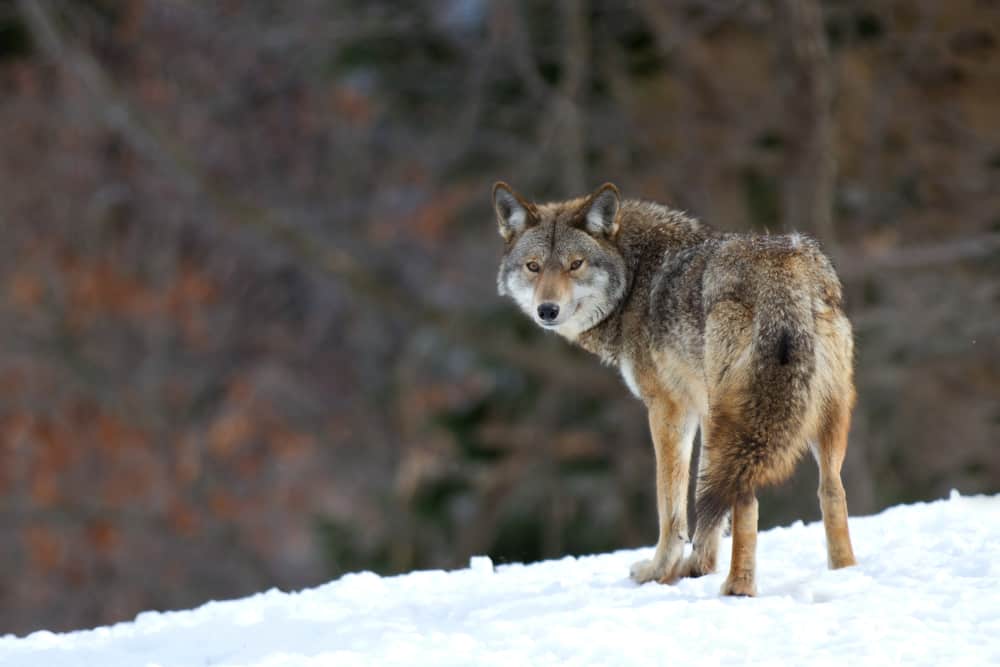
Coyotes are members of the Canidae family and have many traits in common with their relatives (wolves, dogs, foxes, and jackals). They have tight snouts, lean bodies, yellow eyes, thick fur, and bushy tails. These canids are smart and versatile creatures and are generally labeled as ‘wily’ by human beings.
Their industrious characteristics have helped coyotes to spread throughout North America and even to live with people in the cities. The continental population continues to flourish despite occasionally rocky encounters with humans. These animals are significantly smaller than wolves.
A coyote skull is seldom greater than 7.9 inches (20 cm) long, whereas the wolf skull is typically greater than 22.5 cm (8.9″). Depending on where they live, their fur may be gray, white, tan, or brunette.
Native to regions throughout the Americas, coyotes are often found roaming across Canada, the United States, Mexico, and Central America. Their range extends throughout Mexico as well. Deserts, plains, and forests are preferred dwellings of the coyote.
These creatures have colonized all continents, with the exception of the polar regions, and continue to move south — quite close to the Central-South US frontier in eastern Panama.
Table of Contents
- Grey Wolves
- Racoon Dogs
- Red Fox
- African Wild Dog
- Maned Wolf
- Fennec Fox
- Bush Dog
- Golden Jackal
- Arctic Fox
- Crab-eating Fox
- Gray Fox
- Coy Wolf
- Culpeo
- Darwin’s Fox
- Pampas Fox
Grey Wolves
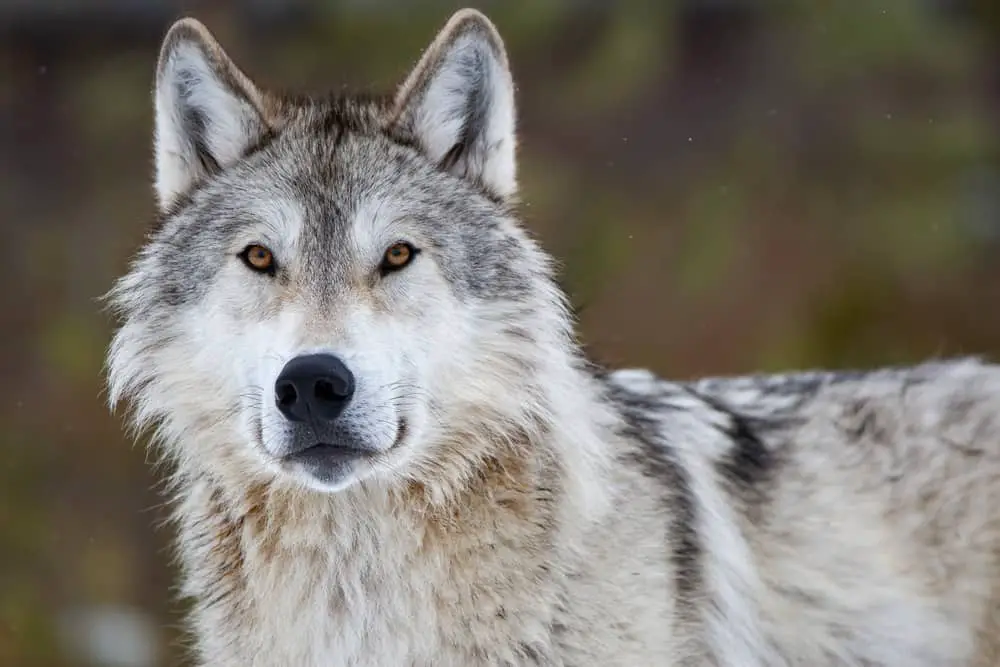
Grey wolves or wood wolves are canines, often having characteristically black-tipped, long bushy tails. Typically, their coloring is a mixture of gray and brown with buffy markings and undersides, though it may vary from solid white to brown to black. Gray wolves look like large German Shepherds.
The wolves’ appearance is dependent on where they live. and they can vary in size. In the north, wolves are generally bigger than in the south. The average length of a wolf’s body is 3-5 meters, and their tails are typically 1-2 meters long.
60 to 100 pounds is the typical weight range for females, while 70 to 145 pounds is the typical weight range for males. Over two-thirds of the United States was the historical range of the gray wolf. Gray wolves today have populations in Alaska, Northern Michigan, Northern Wisconsin, Western Wisconsin, Northern Oregon, Idaho, and Yellowstone Wyoming region.
Coyotes tend to be smaller than wolves. While coyotes weigh between 25 and 45 lb, the gray wolves range between 50 and 100 lb. Red wolves of 100 pounds are equally large. They are also more are more social with humans in comparison to the wolves.
Racoon Dogs
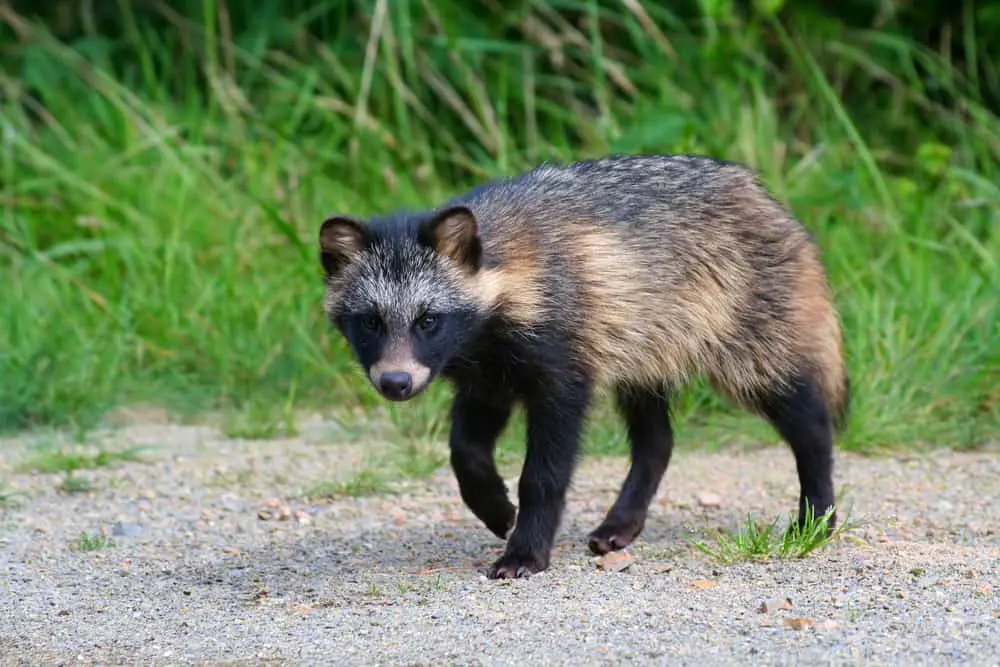
The raccoon dog, known as the mangut, tanuki, or neoguri, is a canid indigenous to East Asia. The mangut is the only species in the Nyctereutes genus remaining. Despite its name, it is more closely related to true foxes and coyotes rather than American raccoons.
The raccoon dog often climbs trees, which is a habit shared only by one other type of canid, the North American gray fox. Ironically, it is not closely related to the North American gray fox. Raccoon dogs feed on insects, amphibians, reptiles, mollusks, carrion, as well as fruits, nuts, and berries.
The raccoon dog is primarily prey to the wolf, often being killed in very large numbers each year. They are monogamous, generally mating in the fall. Litter sizes are usually 6-8 pups, and males tend to fight competitively for females. The raccoon dogs are the only canids known to hibernate.
Red Fox
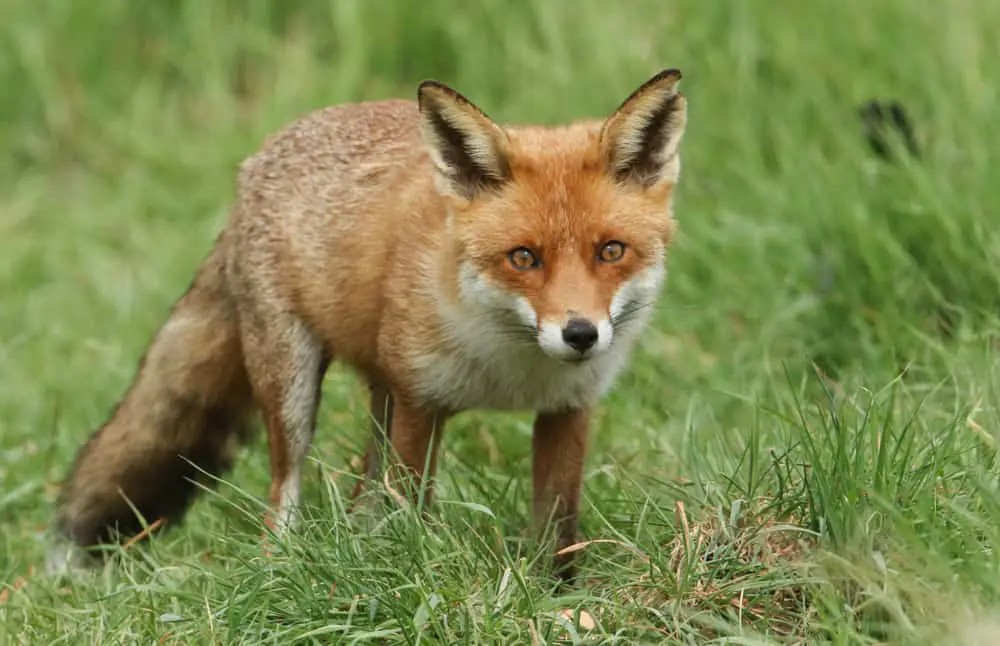
The Red Fox is one of the largest and most widely distributed carnivorous foxes in North America, Europe, Asia, and parts of North Africa. The Red Fox is the largest true fox. They are characterized by long snouts, lithe backs and sides, and black fur on their tails.
They also have a greyish-white throat, chin, and belly. Red foxes have large black feet and black ears. The fluffy white tail is one of the animal’s most striking features. Red foxes are on average three feet long, and two feet tall.
African Wild Dog
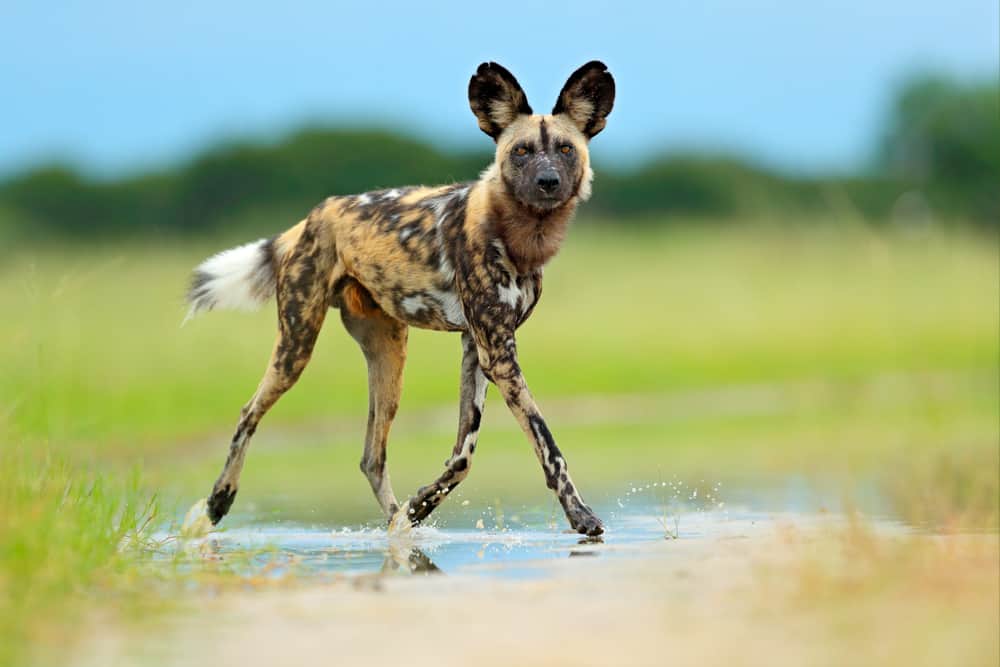
The wild African dog is a dog native to sub-Saharan Africa. It is Africa’s largest wild dog. This wild dog is one of the most vulnerable mammals in the world. South Africa and the Southern part of East Africa host the largest populations (especially Tanzania and northern Mozambique).
Wild dogs are social, collecting in packs of about 10 people, but certain packs number over 40 people. They are opportunistic predators who hunt ruminants of medium size, like gazelles. African wild dogs can achieve speeds of over 44 miles per hour in a sprint. It is 30-56 centimeters in length and weighs about 40-70 pounds.
Maned Wolf
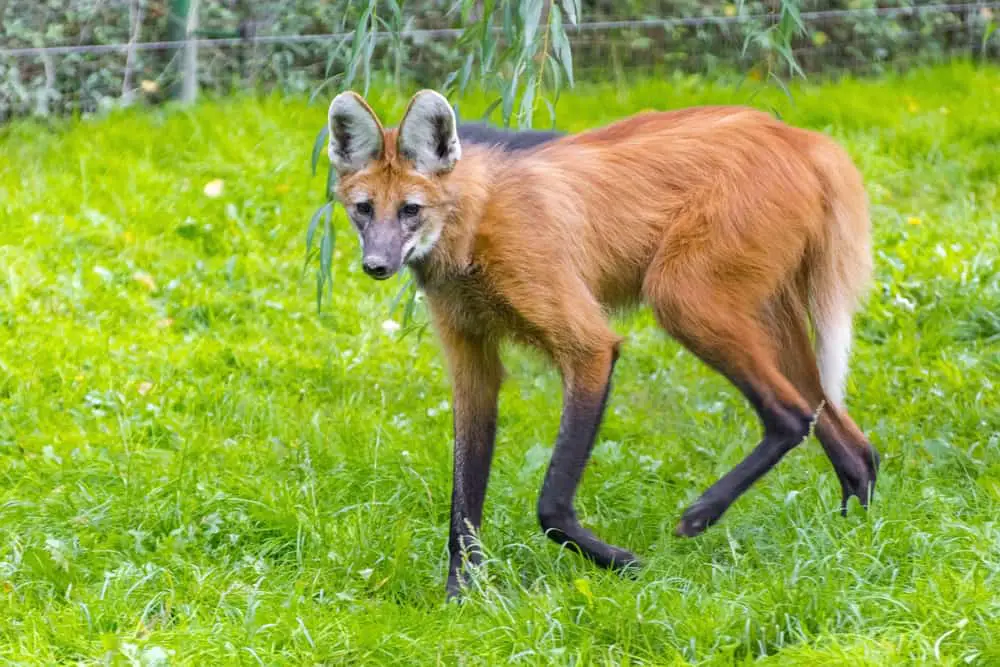
The maned wolf is a large South American canine. It possesses markings similar to foxes, but they are actually no foxes or wolves. It is the only kind within the Chrysocyon genus. The wolf is approximately 3 feet (90 centimeters) high on the shoulder (23 kilograms).
Manned wolves, who have developed in high grassy savannas, have thick, red, long black legs and tail, upright ears. Maned wolves stretch through central and eastern South America including northern Argentina, central and southern Peru, and southern Brazil. They commonly dwell within the Cerrado, South America’s largest biome, consisting of water and dry forests, wilderness, savannahs, and ponds.
Fennec Fox
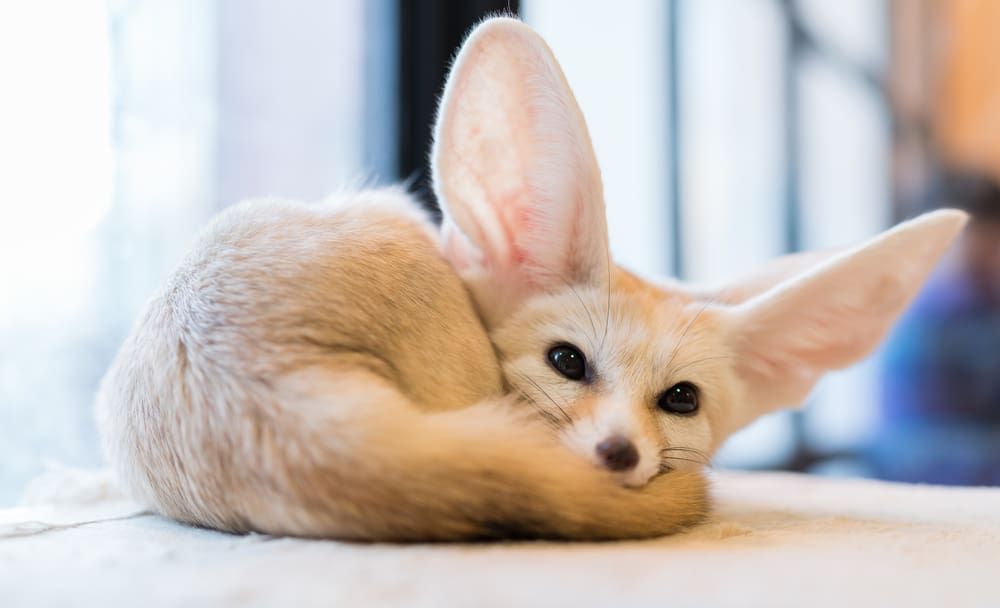
Fennec Fox is a tiny fox that comes from the Sahara Wilderness and the Sinai Peninsula. Their unusually large ears are their most distinguishing feature. These ears serve to dissipate heat in the desert.
Fennec is the smallest canid, with a length of 7 to 12.2 pounds and a weight of 2.2 to 3.3 pounds, between 9.5 and 16 inches. They are primarily nocturnal, unlike the coyote.
Bush Dog
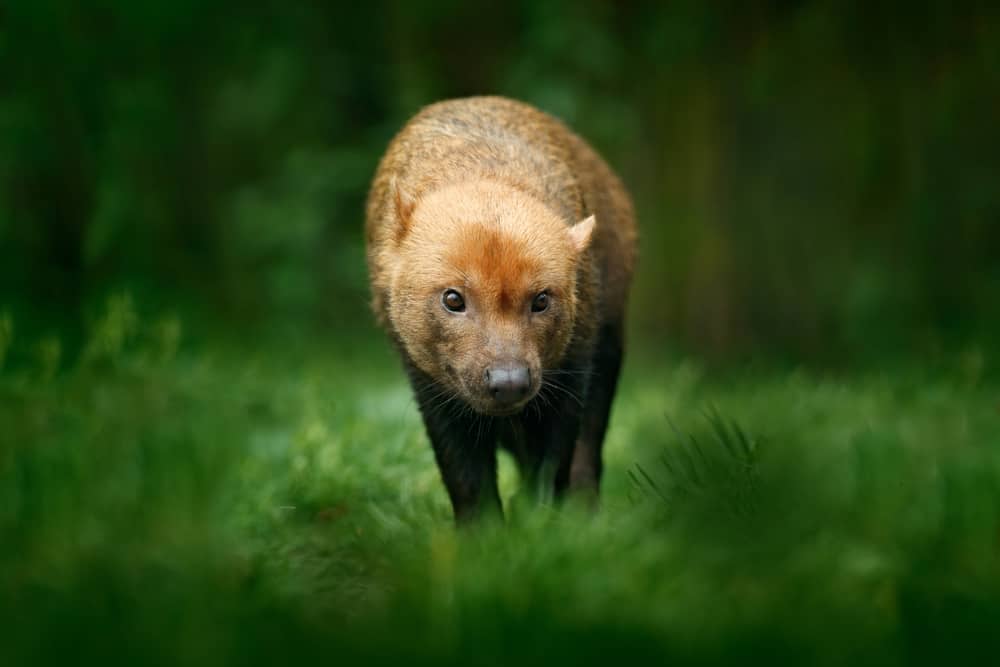
In Central and South America, the bushdog dwells. It is very rare in most areas except Suriname, Guyana, and Peru, despite its extensive range. It was believed to be extinct at one point. Bush dogs are tiny, stout, medium-sized, red-brown, and bear-like canids. They’re equipped with their webbed feet to swim and wade in wet waters.
They are quite short(7-12 inches high), with small legs and a short bushy tail. The reddish tan of Bush dogs extends from out of their heads and makes their back and tail dark brown to black. In the wild, they hunt small mammals such as agoutis, pacas, and occasional capybaras.
Golden Jackal
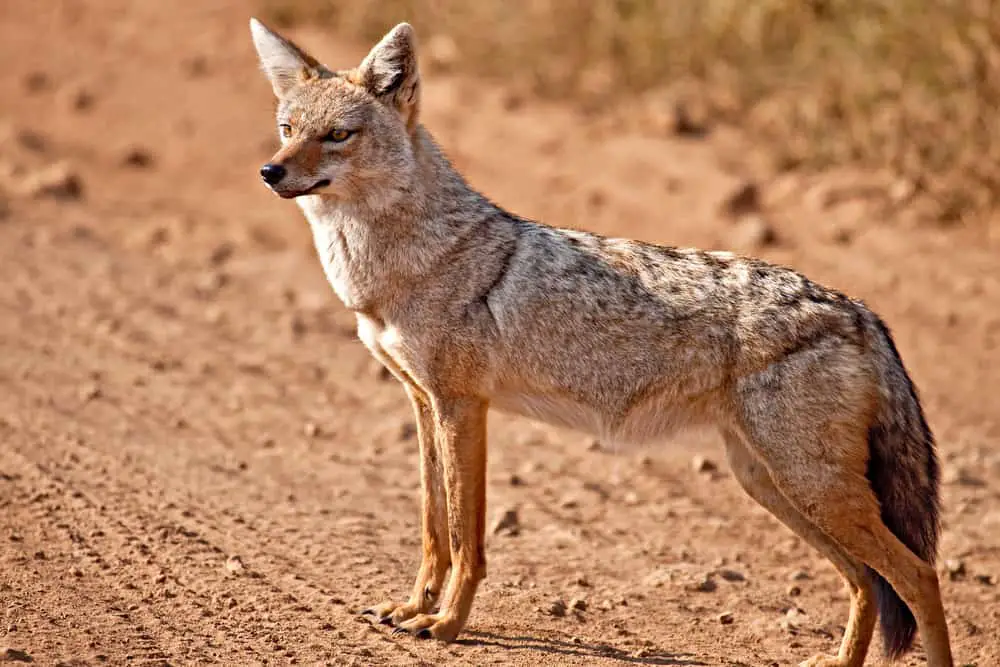
This wolf-like canid is found in Southeastern Europe, Southwestern Asia, South Asia, and Southeast Asian regions. The golden jackal has a body length of 70 to 85 cm and a tail length of approximately 25 cm. Height is about 40 cm.
The fur is usually rough and shortened. Their coats are generally yellow to pale gold-brown, but the color may vary by season or region. When dwelling within the Serengeti in northern Tanzania during the rainy season, golden jackals remain brown-yellow and turn pale gold in the dry season (September-October).
Golden jackals are strictly monogamous, choosing to live in mated pairs. There are 1 or 2 adult “helpers” in most jackal families. Helpers are jackals who stay with the parents for a year, without breeding, to help with the next litter.
They are opportunistic foragers with a diverse diet consisting of young gazelles, rodents, hares, earth birds and their eggs, reptiles, frogs, fish, insects, and fruit (particularly in winter). Sometimes they take carrion.
Arctic Fox
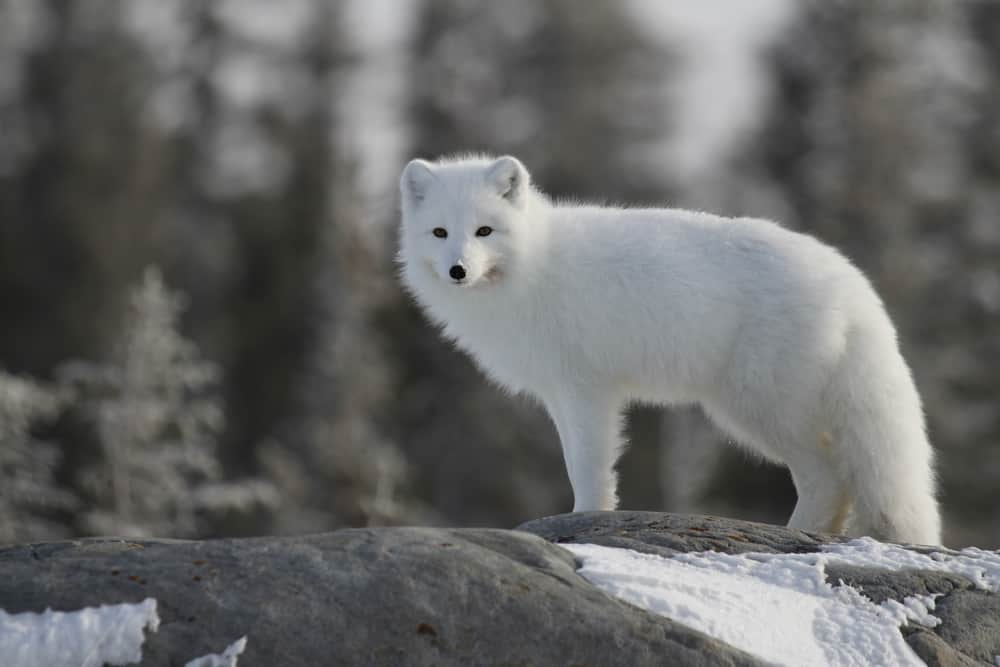
The Arctic fox also referred to as the white fox, polar fox, or snow fox, is a relatively small fox native to the Northern Arctic, and common across the Arctic tundra biome. It is well adapted and best-known for possessing thick warm fur that is also used as camouflage in snowy environments. Many small animals like lemming, voles, ringed pups, fish, aquatic birds, and seabirds are found in the Arctic fox.
It also eats carrots, berries, algae, insects, and others. In the breeding season, Arctic foxes form monogamous pairs and look after their offspring in complex underground dens. Other relatives can help raise the offspring from time to time. Golden eagles, polar bears, wolverines, red foxes, wolves, and grizzly bears are predators who hunt Arctic foxes.
Crab-eating Fox
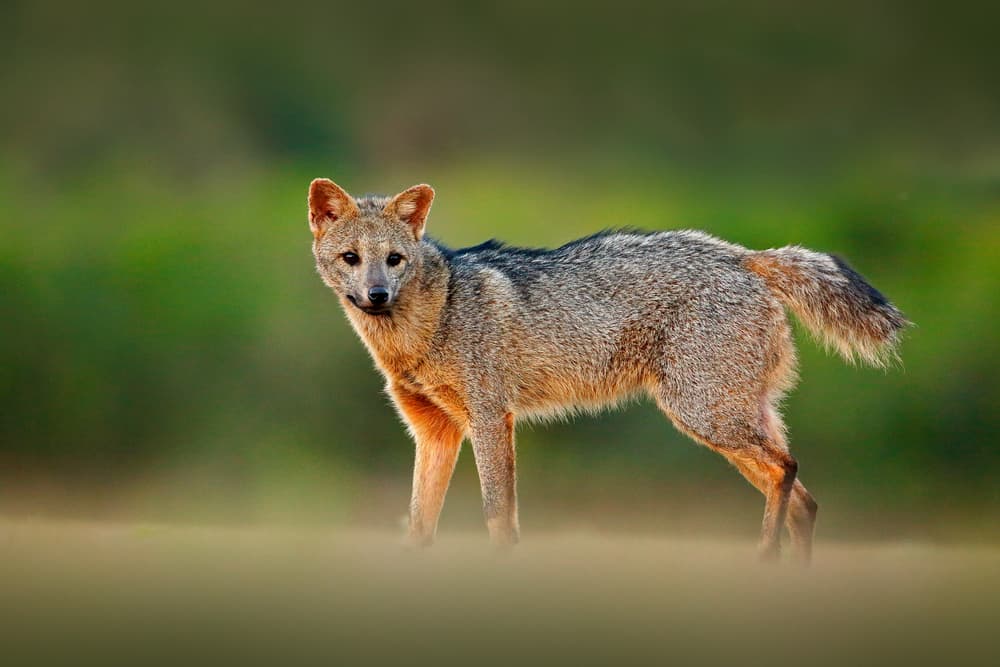
Crab-eating fox is an extinct, medium-sized canid species endemic to central South America. It is also known as the forested fox, the wood fox, or the Maikong. The Pliocene era is where it first appeared. The crab-eating fox has been found in shrublands and tropical savannahs, ranging from Colombia and south Venezuela in the north to Paraguay, Uruguay, and northern Argentina.
In the wet season, the crab-eating fox searches for crabs in the mudded wetlands, leading to the animal’s nickname. It is both omnivorous and opportunist, sometimes preferring insects or meat. One or two litters are born each year to adult females, and the breeding pairs are monogamous. Breeding pairs tend to travel together.
Gray Fox
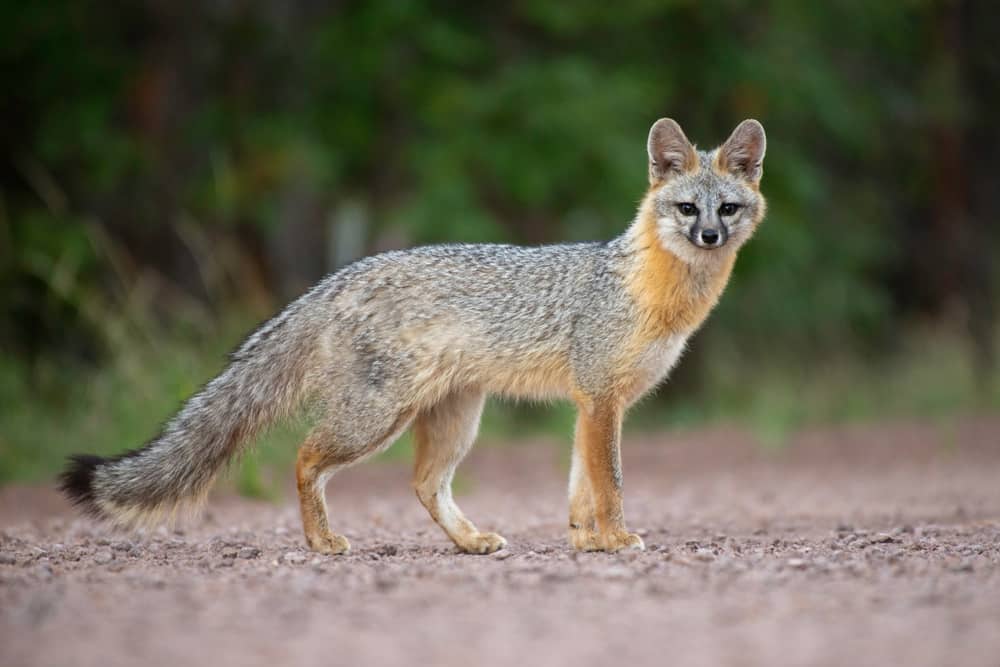
The gray fox is an omnivore of the Canidae family common to Central and North America. The gray fox hunts alone. It often catches birds and cottontails in the eastern US. This fox is monogamous. The litter is 1 to 7 in average size.
Adult coyotes are much larger than gray foxes, often doubling them in size. Evidence suggests that within the last century, coyotes have interbred with eastern Canadian Wolves.
Coy Wolf
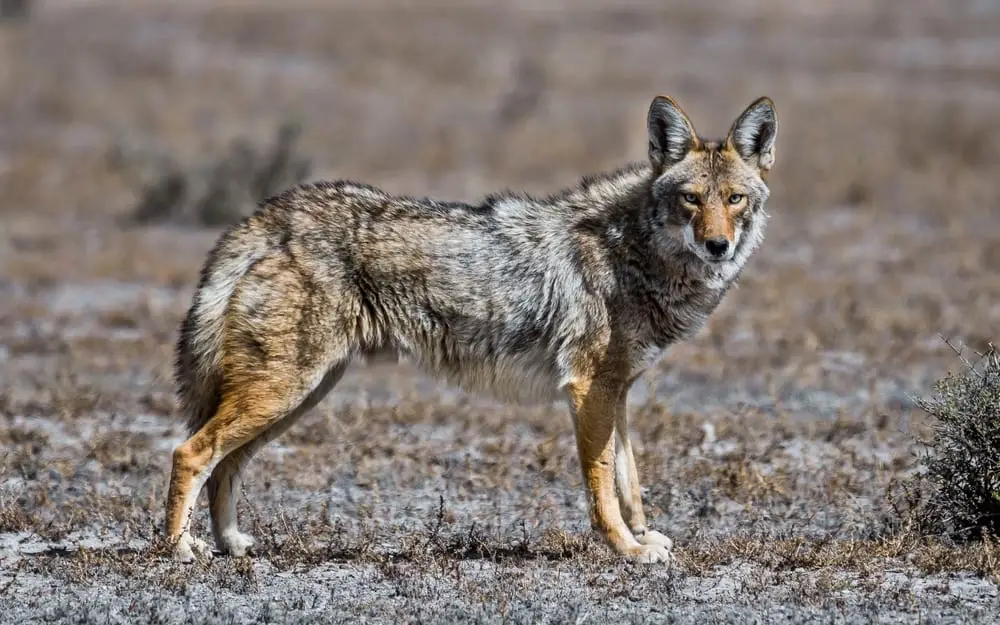
Coywolf is an informal term to describe a canid hybrid of coyotes, eastern wolves, and gray wolves. Hybrids of any combination are generally bigger than coyotes but smaller than wolves, also showing intermediate behaviors between coyotes and the species of the other parent.
In an experiment conducted on hybrid captives, the average weight, facial dimensions, body lengths, foot sizes, shoulder circumferences, and skull sizes compared with pure coyote pups at birth was measured shortly after birth by six F1 hybrids of a male northwest gray wolf and a female coyote.
Though the female coyote delivered the hybrids, the hybrid pups were still much bigger and heavier than the regular coyotes. The hybrids also tended to form more cooperative social groups compared to regular coyotes. The hybrids also reach sexual maturation at a later age (two years) when compared to regular coyotes.
Culpeo
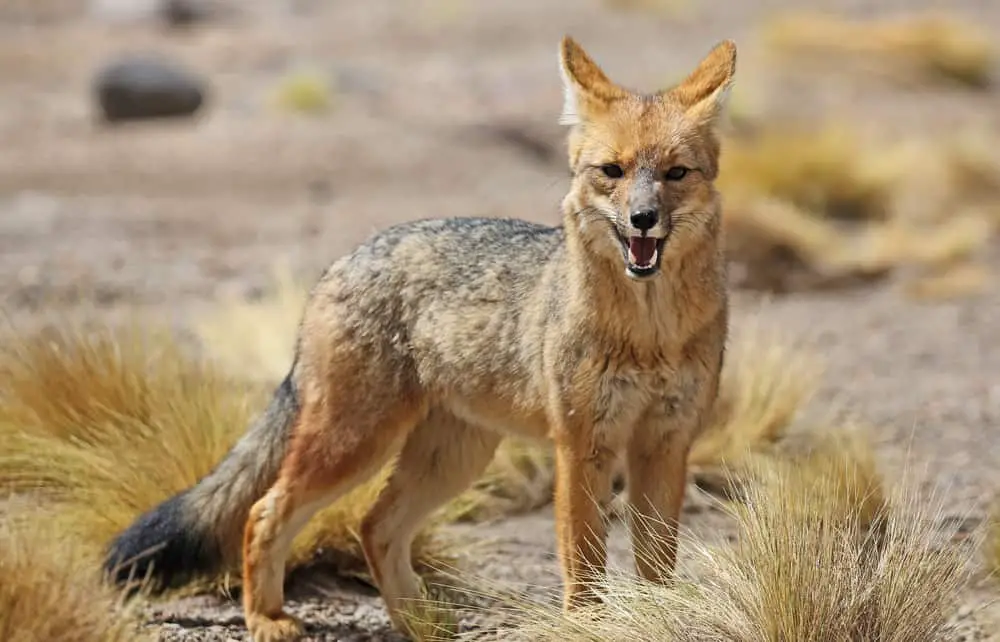
The culpeo is a species of South American fox, sometimes known as zorro culpeo, and Andean zorro, or Andean fox. It’s more closely related to wolves and jackals. Regardless of its name, the culpeo not a true fox. It appears to resemble foxes due to convergent development evolution.
The diet of the culpeo comprises mostly rodents, rabbits, birds, and lizards, while plant materials and cargo are also consumed to a lesser degree. The culpeo occasionally attacks sheep and as a result, is often hunted or drugged. The culpeo resides within many west South American habitats.
The usual period of settlement is from August to October. The female usually gives birth to 2-5 pups after a gestation period of 55–60 days.
Darwin’s Fox
Darwin’s fox is 48 to 59 cm long (17.5 to 25.5 inches) (7 to 10 inches) and weighs from 1.8 to 3.95 kg (4.0 to 8.7 pounds). No key differences between men and women are displayed in this species, except that males possess a wider muzzle. Males also have no territorial conduct and are not aggressive in relation to other men who travel through their territory.
Darwin’s fox has an expansive palette. These foxes hunt for mammals, reptiles, beetles, and invertebrates in dense forests. It chooses fruit and berries at times. Birds and amphibians are also consumed to a lesser extent.
This fox occasionally eats carrion, but generally eats mostly living animals and fruit. It mainly functions as an omnivore, though sometimes as a scavenger. In 1834, the naturalist Charles Darwin first gathered Darwin’s fox from San Pedro Island off the Chilean coast.
Darwin’s fox has always been regarded as a South American gray fox sub-species (L. griseus). However, in 1990, Darwin’s fox was discovered on the continental mainland in the Nahuelbuta National Park and, following the analysis, the fox was clarified as to its own species.
Pampas Fox
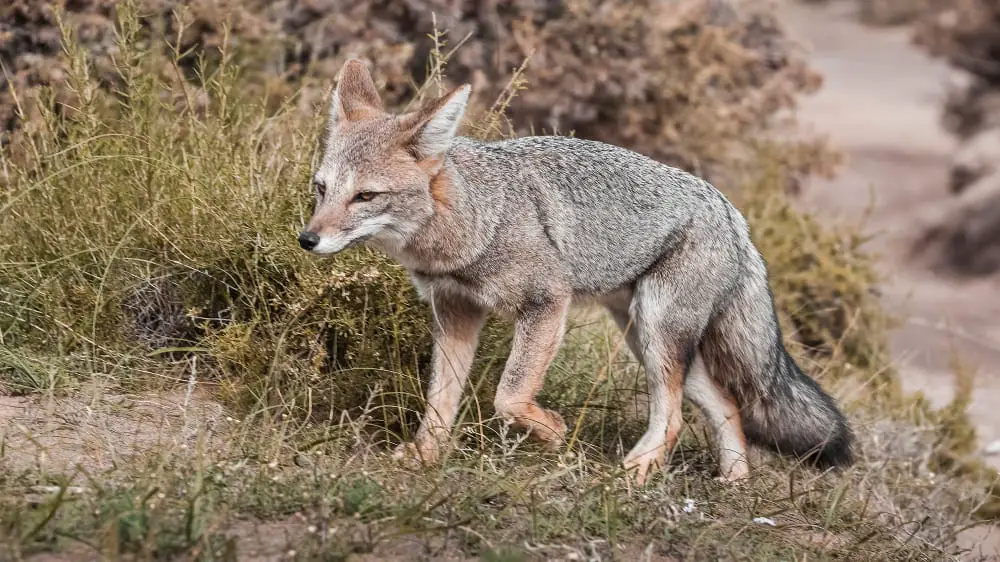
Female Pampas foxes only breed once a year, and it is when they are in heat. An average gestation period of 55 to 60 days results in the birth of eight kits. These creatures live mostly alone, but in the breeding season, they come together as monogamous pairs to raise their young.
Pampas foxes are most active at night, but can also be seen during the day. These animals are omnivorous and have a diverse and opportunistic diet than most other canids. They mainly dine on birds, rodents, hares, fruit, carrion, and insects.
Lizards, armadillos, snails, and other invertebrates are also eaten, as well as the eggs of ground-dwelling birds. The length of males is approximately 10% higher than that of females. Adults are between 51 and 80 cm in body length and weigh 2.4 to 8,0 kg (5.3 to 17.6 lb). The pampas fox is, in fact, genetically closer to a coyote rather than a fox.

